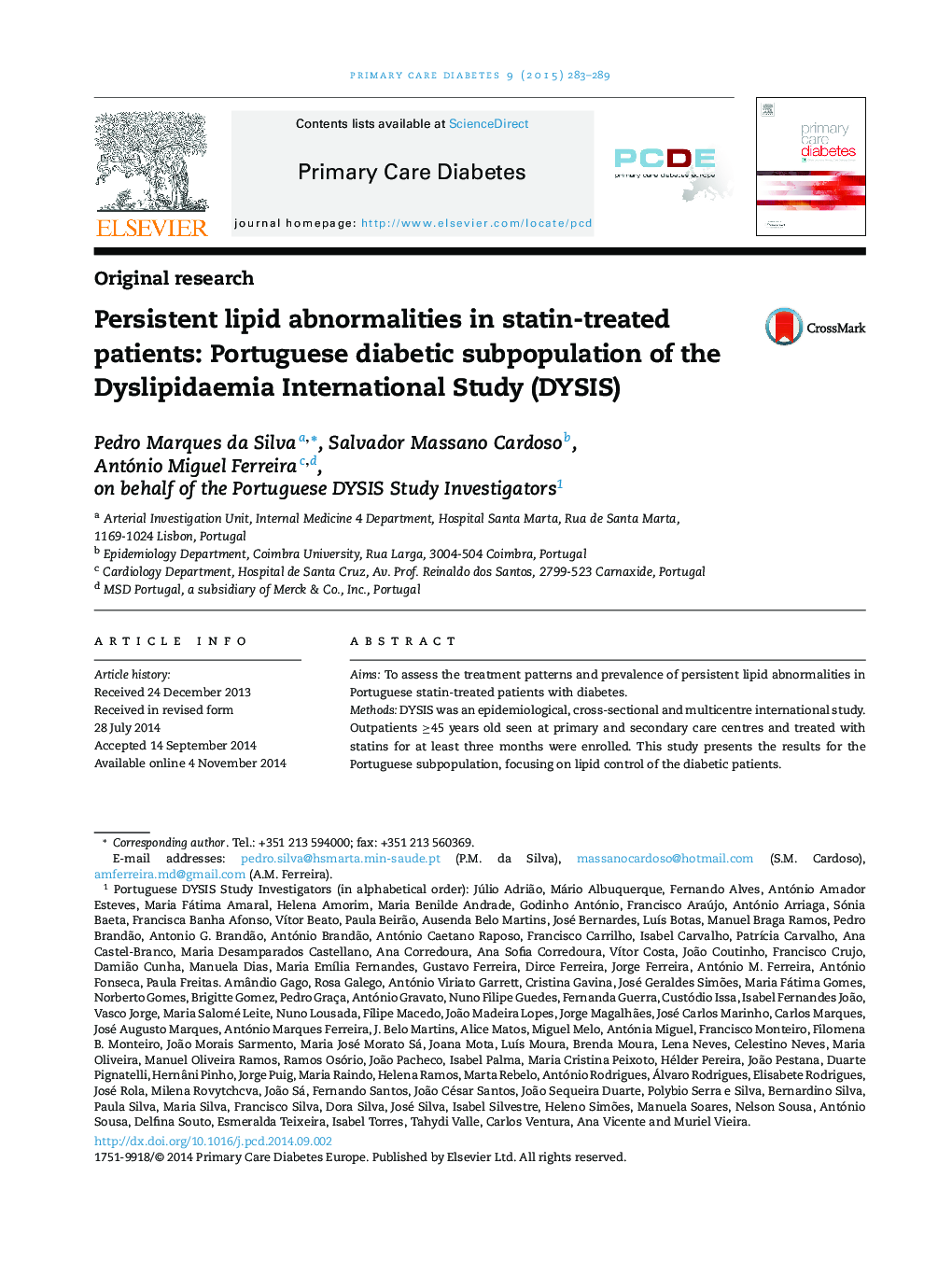| Article ID | Journal | Published Year | Pages | File Type |
|---|---|---|---|---|
| 2678861 | Primary Care Diabetes | 2015 | 7 Pages |
•We assessed treatment patterns in Portuguese statin-treated patients with diabetes.•The majority of patients failed to attain the recommended LDL cholesterol goals.•Relatively low doses of medium potency statins were the prevailing therapy.•There is sizeable room for improvement in controlling these patients’ dyslipidaemia.
AimsTo assess the treatment patterns and prevalence of persistent lipid abnormalities in Portuguese statin-treated patients with diabetes.MethodsDYSIS was an epidemiological, cross-sectional and multicentre international study. Outpatients ≥45 years old seen at primary and secondary care centres and treated with statins for at least three months were enrolled. This study presents the results for the Portuguese subpopulation, focusing on lipid control of the diabetic patients.ResultsOf the 916 patients recruited, 348 (38%) had diabetes mellitus (DM). The majority of the diabetic patients (58%) failed to attain an LDL-C < 2.5 mmol/L, and 77% did not reach the optional goal of LDL-C < 2.0 mmol/L set by the 2007 recommendations of the European Society of Cardiology. The most frequently used statin was simvastatin, both in patients with and without diabetes (55.7% vs. 57.1%, p = 0.68). The mean (SD) statin dose in simvastatin-equivalent units was 26.1 (9.2) mg in diabetics and 25.3 (8.8 mg) in non-diabetics (p = 0.19).ConclusionsThe majority of Portuguese diabetic patients treated with statins failed to attain the recommended LDL cholesterol goals. Relatively low doses of medium potency statins were the prevailing therapy. There seems to be considerable room for improvement through the use of more potent statins, dose up-titration and/or the addition of other lipid-modifying therapies.
